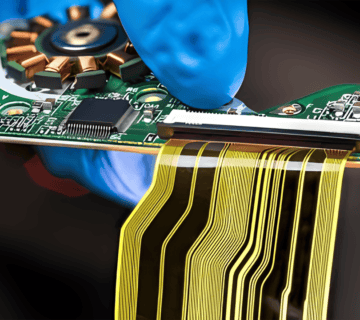Additive manufacturing, commonly known as 3D printing, has revolutionized many industries by enabling the creation of complex designs with remarkable precision. When combined with electronics, this innovative approach is redefining how electronic components are designed, produced, and integrated into devices.
In this blog, we’ll explore what additive manufacturing electronics (AME) is, its benefits, applications, and its potential to transform industries like healthcare, aerospace, and consumer electronics. At Beespenser, we are committed to leveraging such cutting-edge technologies to build a smarter future.
What is Additive Manufacturing Electronics (AME)?
Additive manufacturing electronics involves the use of 3D printing techniques to produce electronic components layer by layer. Unlike traditional subtractive manufacturing, where material is removed to create parts, additive manufacturing builds components by depositing material in successive layers.
This process is not limited to structural parts but extends to embedding electronic circuits, sensors, and antennas directly into devices. AME integrates conductive inks, dielectric materials, and even multi-material composites to enable the seamless creation of functional electronic components.
Advantages of Additive Manufacturing in Electronics
The integration of additive manufacturing in electronics offers several advantages over traditional methods:
- Rapid Prototyping
AME allows engineers to quickly design, produce, and test prototypes, reducing development time from weeks to days. - Customization
It enables the production of tailored solutions, such as custom-shaped printed circuit boards (PCBs) and specialized sensors. - Material Efficiency
Additive manufacturing minimizes material waste, making it an eco-friendly alternative to conventional production. - Compact and Lightweight Designs
By embedding electronic components directly into structural parts, AME supports the creation of lightweight, compact devices. - Innovation in Design
Complex geometries that were once impossible with traditional manufacturing can now be realized, paving the way for unique and efficient designs.
Applications of Additive Manufacturing Electronics
Additive manufacturing is already making waves across several industries:
- Healthcare: Customized medical implants and devices with integrated sensors for real-time monitoring.
- Aerospace: Lightweight, high-performance components with embedded circuits for navigation and communication.
- Consumer Electronics: Wearable devices, IoT-enabled gadgets, and compact drones.
- Defense: Rapidly deployable solutions for specialized military equipment.
These applications highlight the versatility and transformative potential of AME across various sectors.
Future Trends and Challenges
While additive manufacturing electronics is a promising field, it faces certain challenges:
- Material Limitations: The development of conductive and dielectric materials suitable for AME is still in progress.
- Precision and Reliability: Producing highly accurate and reliable components consistently remains a challenge.
- Cost of Entry: Advanced AME equipment and materials can be costly for smaller businesses.
Despite these hurdles, the industry is moving towards breakthroughs in multi-material printing, improved resolution, and broader adoption across industries.
Additive manufacturing electronics is at the forefront of technological innovation, offering immense potential to redefine how we design and produce devices. At Beespenser, we embrace such advancements to deliver smarter, more efficient solutions that meet the needs of our clients and partners.
By staying ahead of industry trends and investing in cutting-edge technologies, we aim to contribute to a future where innovation knows no bounds.
Discover how Beespenser is shaping the future of technology with additive manufacturing.







